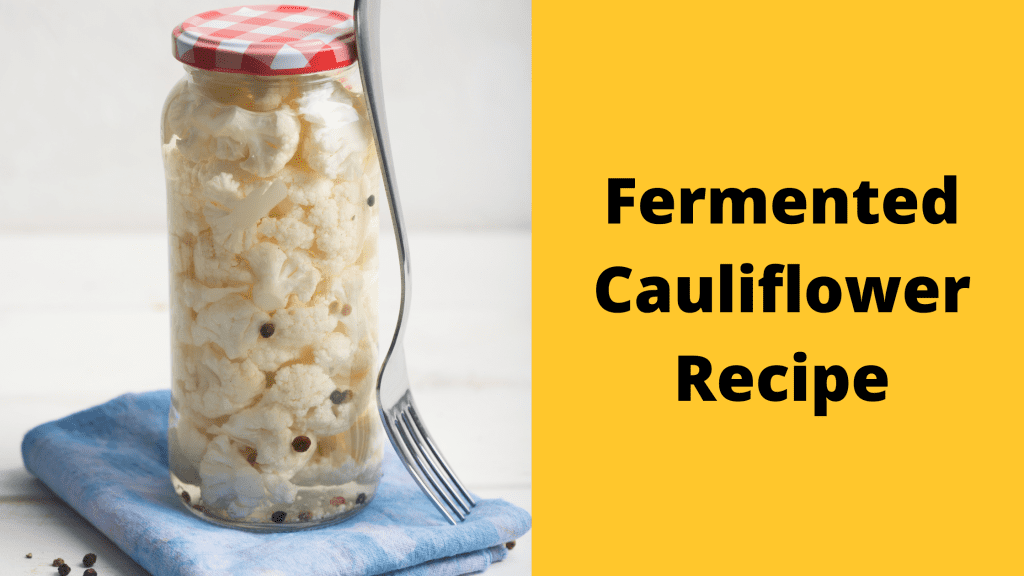
Throwing away food is ridiculous. I often encounter people who are surprised when I tell them how many ways there are to preserve food. By doing this, all you get in return are benefits (directly and indirectly).
We need to eliminate waste if we want to have a nice Planet to live on. At the same time, your body will be thankful as fermented vegetables, per se, are very beneficial for our wellbeing.
You can ferment most of the vegetables. Most common types to be fermented are carrots, pickles, cauliflowers, broccoli, cabbage. This article is going to focus on how to ferment cauliflower.
Once you are done with this quick read, you’ll know what you need in order to complete this process and learn what (lacto) fermentation is, what kind of ingredients you need, etc.
Table of Contents
What Do You Need For Fermenting Cauliflower?
You probably already own the equipment you need to start fermenting. The one thing you might still miss is the airlock kit which I suggest you buy before trying out the recipe.
You might find information saying it can be done without it, but I highly doubt that this is something you wanna do.
Other equipment includes a mason jar and sea salt (preferably) in order to create a brine.
Print
Fermented Cauliflower Recipe
Ingredients
- Sea salt (1 teaspoon)
- 2 cups of filtered water
- 1 Cauliflower (cut)
- Spices (optional)
Instructions
- Create a brine by dissolving the salt into the water.
- Take the cauliflower and fill up the mason jar with it. Make sure the pieces are not too far away from each other. Pay attention to the rim of the jar and keep the cauliflower 2” below it.
- This step is only for those who want to spice the cauliflower with something else. Most common spices are mustard, celery seed, fennel seed, peppercorn, while putting in garlic cloves is also an option.
- If you want the pure taste of sour cauliflower then leave these out of the picture.
- Pour the brine into the jar filled with cauliflower. Be sure that the whole cauliflower is covered in brine but also leave some space on the top of the jar.
- Install the airlock kit on the jar. Please take a look at the instructions on the kit and make it right.
- Simply take the jar to a place with room temperature and leave it there for 4 days.
These six steps are the right way to have cauliflower fermented. Once you have completed them, give the fermented cauliflower a try. Is it sour enough? If yes, replace the airlock kit with a regular lid and store the cauliflower in the refrigerator.
In case you are not pleased with the sourness, continue fermenting for another two weeks for the cauliflower to reach your expectations.
Nutrition
If you make this exact recipe with these amounts of ingredients, your jar of cauliflower will comprise 144 calories, 1 g of fat, 2421 mg of sodium, 14 g of fiber and sugar each, 11 g of protein and 30 g carbohydrate.
Moreover, you are getting really lucky with the vitamins boost such as vitamin C, as well as higher levels of iron and calcium.
The Bottom Line
As suggested, fermenting veggies is beneficial for everyone. You will have well preserved nutrient rich cauliflower and protect the world from unwanted waste.
I would strongly encourage you to do so. The fermented product can stay in the fridge unspoiled for up to three months.

Leave a Reply